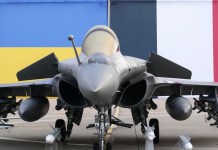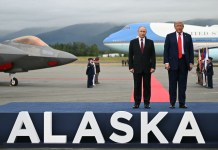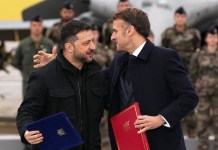Donald Trump announced new US Strategy for Afghanistan. Washington will no longer report the size of its military contingent in Afghanistan and announce plans for the beginning or end of military operations, and the US military will now concentrate on fighting terrorism there. This is the essence of the new US strategy for Afghanistan, which was presented Monday night by President Donald Trump, addressing the people of the country at the base of Fort Myer in Arlington, Virginia.
Analysis on US Strategy on Afghanistan
“My instincts initially prompted me to leave [from Afghanistan], and I historically like to act according to my instincts, but all my life they told me that the decisions will be completely different when you sit at the table in the Oval Office,” the American leader admitted.
“After many meetings for more than one month, we held a final meeting at Camp David with members of my cabinet and captains to complete [the formation of] the strategy,” he added. According to the Commander-in-Chief of the US Armed Forces, “the consequences of the sharp withdrawal of the” American military contingent from Afghanistan “would be both predictable and unacceptable.” “The hasty conclusion [of the armed forces] will create a vacuum that terrorists – including terrorist groups” Islamic State “and” Al-Qaeda ” would immediately fill,” the president said.
According to Trump, the consequences of such actions were demonstrated in 2011, when “America hastily and recklessly withdrew its troops from Iraq.” “As a result, what we so hard to achieve has fallen into the hands of terrorists. The vacuum that was formed at that time because of such a rapid withdrawal [the US from Iraq] created the IG a safe haven for development, recruitment of fighters and attacks “We can not repeat in Afghanistan the error that our leaders made in Iraq,” he said.
New US Strategy in Afghanistan
As Trump said at the time of his appeal, the core of the new American strategy in Afghanistan will be the termination of the designation of the time frame for operations and the planning of actions based on the real situation on the ground.
“The core of our new strategy is to move from a time-based approach to an approach based on circumstances, and I have said many times about how counterproductive for the US is to declare the timing of the beginning or the end of military operations,” he said.
“We will no longer talk about the size of our contingent or our plans for further military operations,” added the head of state.
“Principal Realism”
Separately, Trump noted that “American military power will no longer be used to build democracy in remote areas or to try to rebuild other countries in its own way.” “Instead, we will work with our allies and partners to protect common interests,” he assured.
“This fundamental realism will tell us what decisions to make in order to move forward,” Trump declared, effectively giving the name to the new approach. At the same time, the head of state pointed out that the US “will expand the powers of the US armed forces to counter terrorist and criminal networks that sow violence and chaos in Afghanistan.”
“As we lift restrictions and expand the powers of [the military] in the field, we see significant results in the fight against the IG, including the release of Mosul in Iraq,” he added.
Warning to Pakistan, Invite to India
During his speech, Trump appeared to India, urging her to give the US much support with Afghanistan: “We appreciate India’s important contribution to [restoring] stability in Afghanistan.” India earns billions of dollars through trade with the US, and we want it to help us with Afghanistan is more, especially in the sphere of economic support and development, “he said.
At the same time, he appealedto Pakistan, warning this state of the inadmissibility of providing shelter to terrorists on its territory. “We can no longer remain silent about Pakistan’s quiet harbors for terrorist organizations: the Taliban and other groups that pose a threat to the region and not only Pakistan can gain much if it joins our efforts in the Afghanistan, he will lose a lot if he continues to harbor terrorists, “the president said.
Negotiations with the Taliban
Just after the end of Trump’s speech, the State Department issued a statement by Secretary of State Rex Tillerson who drew attention to how the new strategy will affect Washington’s diplomatic efforts to stabilize the situation in Afghanistan. First of all, he said that the United States is ready to supportpeace talks between the Afghan government and the Taliban without preconditions.
“We are ready to support peace talks between the Afghan government and the Taliban without any preconditions, and we expect that the international community, first of all the neighbors of Afghanistan, will join us in supporting this peace process,” Tillerson said. In his estimation, Washington’s new strategy radically differs from “previous approaches that were based on artificially created deadlines” for accomplishing certain tasks.
Tillerson also drew attention to the fact that the Taliban should take decisive action to fight terror in the region. “Pakistan has been hard hit by terrorism and can become an important partner in achieving our common goals of peace and stability in the region.” We are looking to Pakistan to take decisive action against militant groups on its territory that pose a threat to the region, “the Secretary of State said.
He also called India in the future an important partner in ensuring peace and stability in South-East Asia, welcoming the country’s contribution to the “political and economic modernization” of Afghanistan.
Although Trump deliberately drew attention to the fact that official announcements of sending additional contingent to Afghanistan will not be made, it was indirectly confirmed later by Pentagon chief James Mattis. It is also noteworthy that literally an hour before the president’s speech in Fort Myer, Fox Newsreferring to sources in the White House claimed that Trump signedan order to send 4 thousand US troops to Afghanistan.
“I instructed the head of the US Joint Chiefs of Staff [Joseph Dunford] to begin preparations for the implementation of the president’s strategy, I will be in contact with NATO Secretary General [Jens Stoltenberg] and our allies, some of whom are also committed to increasing the number of troops [in Afghanistan]. Together we will help the Afghan security forces to put an end to the terrorist hub, “Mattis said in a statement.
Support and Criticism
Tramp’s new approach was generally viewed positively both among the expert community and among the establishment, although representatives of the opposition Democratic Party felt that the president had left out the important details of the new strategy.
Influential Senator John McCain (a Republican from Arizona), although he said that such a statement should have been made much earlier, was generally accepted with approval by a new approach. From his point of view, his most important task was to deploy the country from the course of the previous administration.
“I believe that the president now directs us beyond the failed strategy of the previous administration, which simply postponed the defeat,” McCain said. “It is especially important that the announced new strategy does not set us a time frame for the withdrawal, but instead makes it clear that any decision to reduce our involvement will be based on the circumstances on the ground,” he added.
USA in Afghanistan
The military operation in Afghanistan began in the fall of 2001. At present, there are approximately 13,000 servicemen of the international coalition in Afghanistan, including about 8,400 American soldiers and officers. They are mostly engaged in training Afghan units, and also act as military advisers.
According to the findings of the US Department of State inspector on reconstruction in Afghanistan, John Sopko, the authorities in Kabul in November 2015 kept under full control 72% of the country’s territory, and by November 2016 this figure was reduced to 57%.




